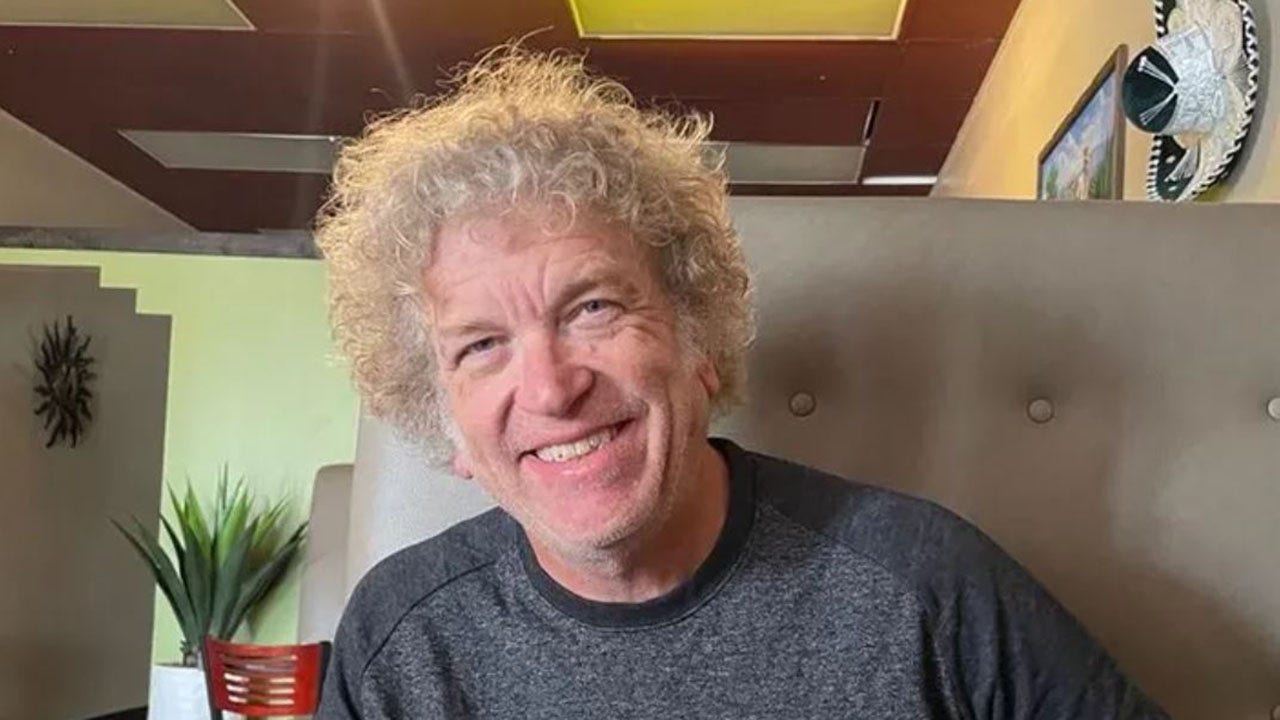While Philadelphia now may be better known for Gritty – the big shaggy orange mascot of the city’s hockey team – its reputation was once of being a manufacturing mecca.
Indeed, from around the late 1800s to 1920, the city was dubbed the Workshop of the World because of its many factories and mills. ‘They produced just about everything you could think of,’ Joseph Minardi, the author of four books on his hometown, told DailyMail.com.
The long list of things produced in the city ranged from cigars to steel ships to hats to locomotives. ‘Of the 264 manufactured items listed by the US Manufacturing Survey of 1910, Philadelphia produced 211 of them,’ according to Minardi’s latest book, City of Neighborhoods: Philadelphia, 1890–1910.
Drawn by jobs, people moved to the city and the rapid population growth fueled a building boom. ‘Even a simple laborer could save enough for a house,’ he explained.
For his new book, Minardi, a photographer and preservationist, researched by sifting through building permits in the city’s archives and collected images. The photographs present a portrait of the city’s people – laborers, proprietors, children – that populated its distinct neighborhoods and sections. They also depict the shops and saloons on the city’s corners, its row houses and their differing architectural styles, and the transportation transition from horse and buggy to cars.
Philadelphia has had many monikers but from around the late 1800s to 1920, it was known as the Workshop of the World due to the city’s many factories and mills. Joseph Minardi has written four books about his hometown and his latest, City of Neighborhoods: Philadelphia, 1890–1910, looks at this period of rapid growth. Above, Frankford Avenue north from Unity Street, ca. 1910. The avenue is still a main thoroughfare of the Frankford neighborhood in Northeast Philadelphia. ‘The Philadelphia and Reading Railroad’s passenger station is pictured (left), as is the bell tower of St. Mark’s P. E. Church (still standing) farther along Frankford Avenue,’ Minardi wrote. He told DailyMail.com: ‘It doesn’t look like this at all today
It took Minardi, a photographer and preservationist, over a year and a half to sift through thousands of building permits at the Philadelphia City Archives for his new book. He told DailyMail.com that he has been collecting historical photographs for over a decade. Above, Haverford Avenue east of Forty-Second Street, 1907. He said that the grocery store seen above was a typical corner shop in West Philadelphia. It would eventually merge with others to form what is now known as Acme Markets, a chain that is still operating in the city and other states like New Jersey. Minardi pointed out the delivery wagon on the left
The above photograph, Twenty-Ninth Street north of Jefferson Street, ca. 1907, was taken in Brewerytown, a neighborhood in Lower North Philadelphia, according to Minardi. ‘Prohibition put the breweries out of business but the name stuck.’ He pointed out the pharmacy on the corner and said it was typical for an owner to reside above his shop. Currently, the area is being gentrified but he said that the block remains much the same. He noted the ornate conical feature known as a ‘witch’s hat’ above the pharmacy
Above, Lena Street looking north from East Penn Street, 1909. ‘It’s a wonderful photograph,’ Minardi told DailyMail.com. He pointed out that the composition draws the viewer’s eye to the factory, water tower and churches in the distance as well as the classic row houses, which have different architectural styles, to the left and right. The photograph was taken in Germantown in Northwest Philadelphia. ‘Persecuted German Mennonites seeking to worship freely’ settled the area and it was ‘incorporated as a borough in 1844,’ Minardi wrote
‘Henry G. Schultz & Son built many houses in North Philadelphia, including these distinctive three-story houses and many more just like them on Erie Avenue. This row of houses was built in the spring of 1906,’ Minardi wrote about the above image, 1620-1642 Erie Avenue, c. 1906. He said the homes, which have amenities such as front porches and bay windows, in North Philadelphia were ‘pretty fancy’ and were for those in the upper-middle class. He explained that during this period builders advertised their latest residential accomplishment on postcards and then sent them to prospective buyers. ‘They never passed up an opportunity to show off’
Above, Workers at Historical Publishing Company, ca. 1895. Minardi devoted a chapter of his new book to talk about the people who called the city home. There were the ‘proper Philadelphians,’ who were the wealthy elite that owned the factories and had ties to the city’s Colonial past, he wrote. There were also laborers, as seen above. Different immigrant groups – Irish, Italians, Eastern European Jews – came to the city for work and to escape persecution, he explained. African Americans had been part of the city since Colonial times and Minardi noted that they had well-established section in South Philadelphia
In 1682, William Penn, a Quaker, established Philadelphia, which means City of Brotherly Love. The city played a pivotal role in the founding of the United States and many historic events – including the gathering of the First Continental Congress and the signing of the Declaration of Independence – took place there.
Shipbuilding and trade were an important part of its economy. Starting in 1890, the city ‘was transformed… into an industrial powerhouse that spurred exponential population growth,’ Minardi wrote in his new book.
The next two decades saw the city’s population increase by about 500,000. People flocked to the city for work. He wrote: ‘Most of these jobs required little or no formal education. They were often dirty and dangerous, with long hours and low wages.’
In the early 20th century, a manual laborer could earn anywhere from $500 to $1,000 a year while new homes cost about $2,000, he pointed out in his book. Nonetheless, the demand was high and there were those who could afford the ‘luxury features of the day: indoor plumbing, gas and electrical fixtures, steam heat, and hardwood flooring,’ according to the book.
Minardi told DailyMail.com: ‘They were able to build these houses overnight.’ He added that builders were able to cater to every potential buyer. For laborers, it was important to live near the factory or mill where they worked.
Over 6,500 homes were built each year on average from 1890 to 1910. The city’s farmland shrunk from 33,000 acres to around 400 acres by 1920 because of all the development, according to the book.
Public transportation was also integral to the city’s growth as it connected neighborhoods and areas. Between 1897 and 1915, 200 miles of electrified trolley line tracks were laid down, according to City of Neighborhoods. ‘It was fairly easy to hop on the trolley and go to town and do some shopping,’ Minardi said.
Development was also spurred by the opening of the Market Street Elevated Line, known as the ‘El,’ in 1907.
‘Prior to the Consolidation Act of 1854, Philadelphia County consisted of nine districts, six boroughs, and thirteen townships,’ he wrote. Minardi explained that even after they joined to become one city, people still first identified themselves by their town or section – not as a Philadelphian.
While some of these areas, like Branchtown, Pittville and Milestown, have been lost to history, others, such as Kensington, Germantown and Bustleton, are still part of the city today, he noted in his book.
‘These place names have specific connotations, tied directly to their own unique histories or industries, with their own way of life and architecture. As Philadelphia’s population grew rapidly, the city’s grid pattern of streets expanded accordingly, eventually overrunning many of the old districts.’
Minardi’s book examines these neighborhoods broken down into the city’s different sections.
Above, Baltimore Avenue east of Fifty-First Street, ca. 1909. The avenue was a major commercial corridor in West Philadelphia. Minardi pointed out the variety of different businesses – a hardware store, barbershop and saloon. Development in West Philadelphia was spurred after the El opened in 1907. Minardi wrote: ‘Many of the blocks depicted here were built as a direct result of this new and modern form of mass transportation’
‘South Philadelphia in that period was kind of like the melting pot of the city,’ Minardi explained about the above image, Second Street north of McKean Street, ca. 1907, which was taken in that neighborhood. Many immigrants settled in the area and were drawn to Philadelphia to work in one of its many factories and mills. He wrote: ‘Most of these jobs required little or no formal education. They were often dirty and dangerous, with long hours and low wages.’ Nonetheless, Minardi said that workers were still able to save enough for a home
Kensington was one of the neighborhoods that helped Philadelphia earn its Workshop of the World reputation, according to a new book. It had several textile mills that made such products as carpets, silk, cotton and leather goods, Joseph Minardi wrote in City of Neighborhoods: Philadelphia, 1890–1910. There were also sheet iron works and lumberyards, he noted. Above, Birch Street west of Frankford Avenue, ca. 1910. ‘It was the working-class section of the city,’ he told DailyMail.com. The above ‘would be a pretty typical street scene in Kensington.’ The photograph was likely taken in the summer, he said, pointing out the awnings on the right that provided shade before air conditioning was commonplace
‘There’s a cigar store on the right,’ Minardi told DailyMail.com about the above image, Eighth Street south of Allegheny, 1910, which was taken in North Philadelphia. ‘It seemed just about every man smoked a cigar back in those days.’ There were 2,000 cigar manufacturers in the city at one point, he said. On the left is a tavern. Minardi noted the difference in architectural style between the houses on the left and those on the right, which had such amenities as bay windows and porches. He said: ‘Another great thing about these pictures is there were no cars in the street. You get the atmosphere what it was like back in those days’
In his new book, Minardi wrote it is unclear how Bustleton, a neighborhood in Northeast Philadelphia, got its name. Above, Bustleton Pike at Welsh Road, looking south, ca. 1910. ‘It was pretty much an outpost of Philadelphia,’ he explained. The photograph marks a transitional period in which cars were supplanting the horse and buggy. Minardi noted that the store on the right sold gasoline and oil. Public transportation, such as electrified trolley lines and the opening of the Market Street Elevated Line, known as the ‘El,’ was very important to the city’s growth, he said
Minardi was born and raised in South Philadelphia. In college, he studied art and art history. After he graduated, he worked as a graphic designer but also started taking photographs of the city’s architecture.
As a board member of the University City Historical Society, a preservation group, he posted his images on their blog and became editor of their newsletter. His first book was focused on historic architecture of West Philadelphia because, he explained, there were no good books on that section of the city. He then turned to other parts of Philadelphia for his next two books.
He went in a different direction for his latest book, City of Neighborhoods. For over a decade, Minardi has been collecting archival photographs that encompassed the entire city from 1890 to 1910. ‘As I building my collection, these photographs were telling a story,’ he explained. ‘It was a story of a city rapidly growing.’
It took Minardi more than a year and a half to research thousands of building permits at the Philadelphia City Archives – a laborious process.
He wrote: ‘The purpose of this book is to illustrate what the city’s neighborhoods looked like when they were freshly built: a time before the view became obscured by automobiles, overgrown trees, and utility wires; a time before the homes’ facades were altered beyond recognition; a time when they appeared exactly as the builder and the architects envisioned.’
Above, H Street north from Westmoreland Street, ca. 1910. The photograph is the cover of Joseph Minardi’s new book, City of Neighborhoods: Philadelphia, 1890–1910. To the left is an old-fashioned saloon that seems straight out of a Western movie, Minardi told DailyMail.com. ‘It looks like it was a pretty good neighborhood to raise children back in those days,’ he said of Kensington, which was then one of Philadelphia’s manufacturing centers
Minardi was born and raised in South Philadelphia. After he graduated from college, where he studied art and art history, he worked as a graphic designer. But he also started taking photographs of the city’s architecture. As a board member of the University City Historical Society, a preservation group, he posted his images on their blog and became editor of their newsletter. This eventually led to his first book. Above, Twelfth and Porter Streets, ca. 1906, in South Philadelphia. Minardi said that the above corner store sold sporting goods and cigars, which was ‘a pretty odd combination’
In the early 20th century, a manual laborer could earn anywhere from $500 to $1,000 a year while new homes cost about $2,000, Minardi pointed out in his new book. Above, Fracker (Seventy-Second) Street west of Old York Road, ca. 1910. Minardi said that the photograph was taken in the city’s outskirts in its far northern part. ‘It’s just a mud road at this point,’ he said, adding that the shop on the right was selling pickles for 12 cents a can
Above, Sixtieth and Reinhard Street, ca. 1910, in Southwest Philadelphia. The corner store, Minardi wrote, was a Philadelphia tradition and a necessary part of the city life especially before cars. ‘Most were highly specialized, selling just meat, dairy products, or sporting goods. Busy homemakers shopped on foot and carried a wicker basket for gathering the day’s goods,’ he wrote









